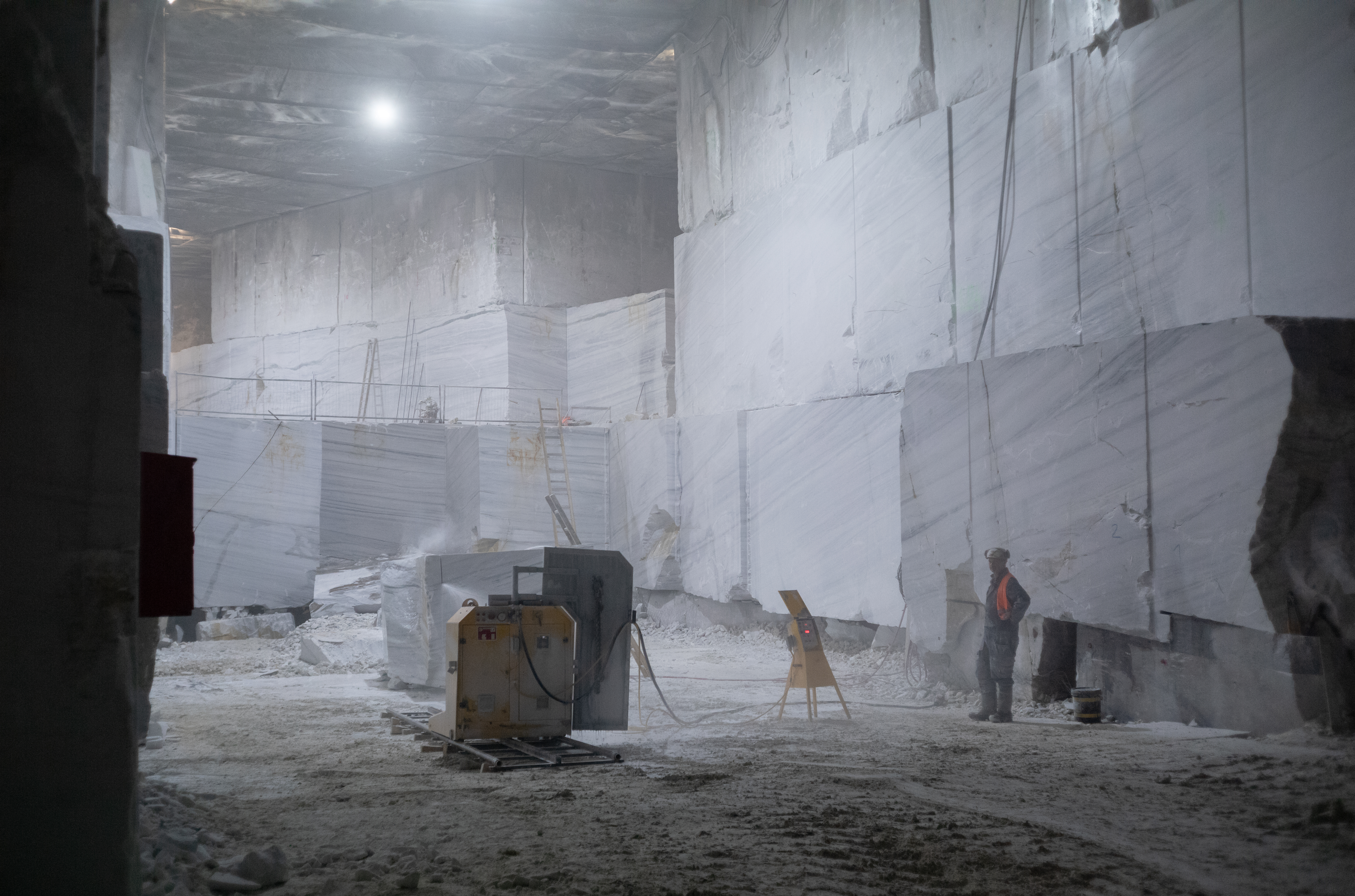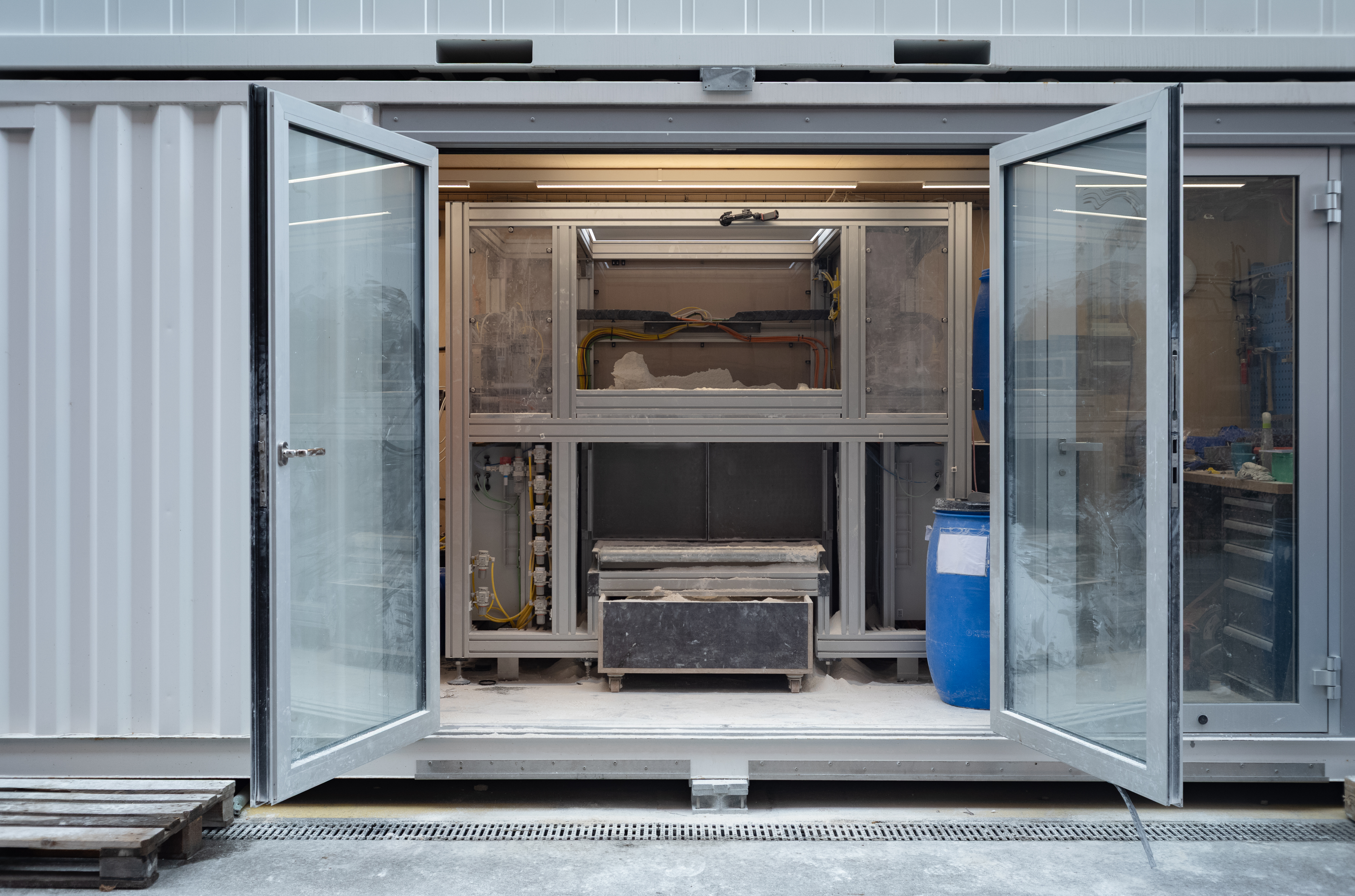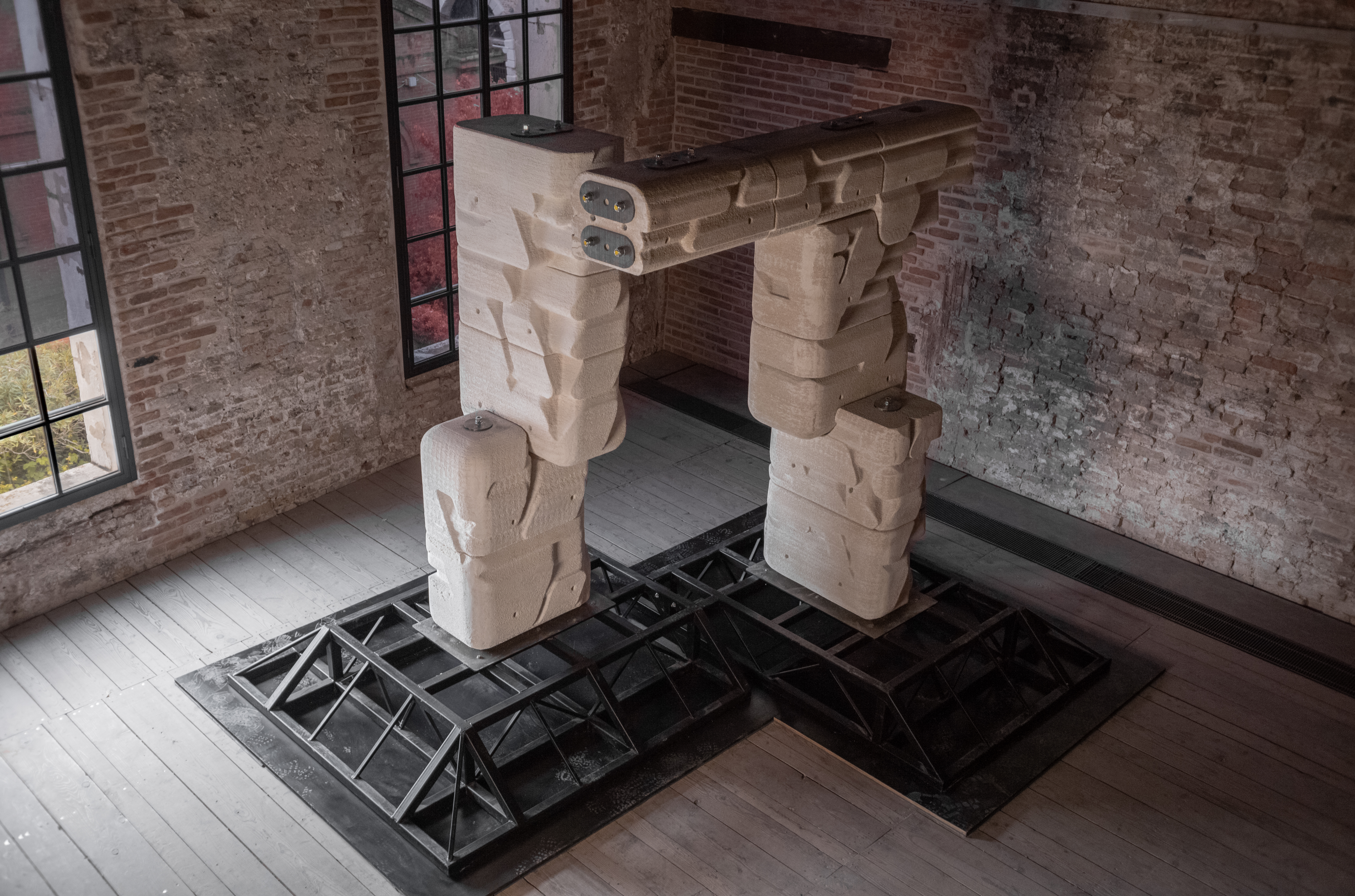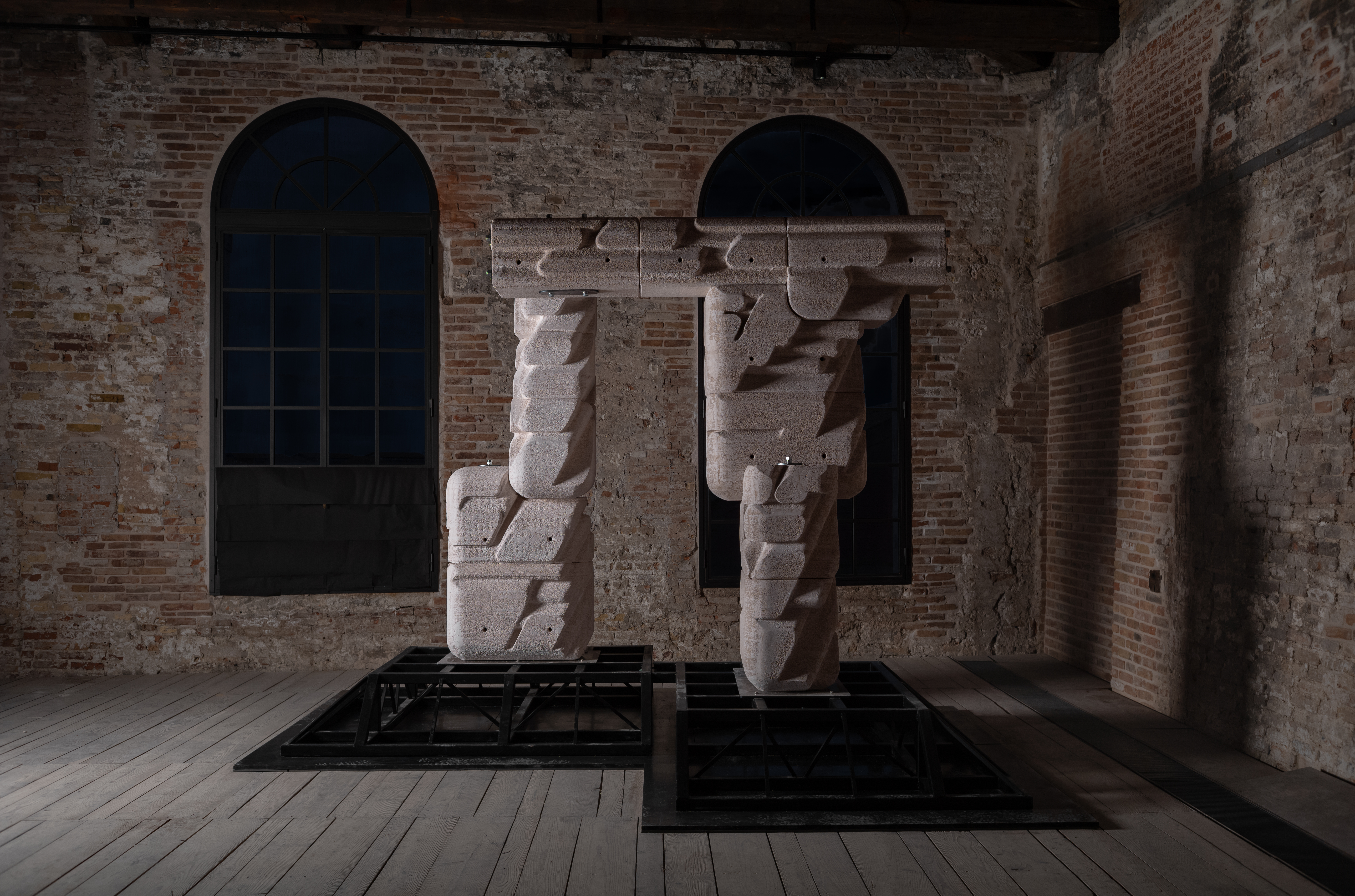News: ANTI RUIN
A collaboration between London-based design studio OZRUH and ETH Zurich, ANTI-RUIN is a new research-led project exploring how stone waste can be transformed into structural architecture through 3D printing.
At its core, ANTI-RUIN uses a novel binder jetting process to turn marble dust—specifically the byproduct from the Lasa Marmo quarry in South Tyrol—into freestanding stone elements without the need for moulds or support structures. The process involves no toxic binders or post-processing, offering a sustainable and scalable alternative to conventional stone construction. Developed under the direction of Dr Pietro Odaglia, this neoteric technique has allowed the team to create the world’s largest 3D-printed stone structure.

But the project also demonstrates how stone’s life cycle can be extended through reuse and recomposition. Instead of resisting decay, the system is designed to adapt over time, allowing components to be reassembled and reconfigured. ANTI-RUIN proposes a circular model where construction byproducts—such as marble, brick, or concrete dust—can be reclaimed as new architectural material.

Structurally, the installation also challenges traditional balance and load-bearing conventions. One column stands independent, while the slab it supports is offset, creating an asymmetric but stable configuration engineered by formDP. This demonstrates how digital fabrication allows precise internal geometries to control weight and stability within each printed element.

Accompanied by a twenty-minute film documenting its development—from quarry to fabrication and installation—the project positions itself as a test case for sustainable stone innovation. Having shown iterations during Venice and at the Barbican in September, future phases are planned for 2026 and beyond, where ANTI-RUIN will continue to investigate how digital technologies and natural materials can combine to create adaptable, low-waste architectural systems.

